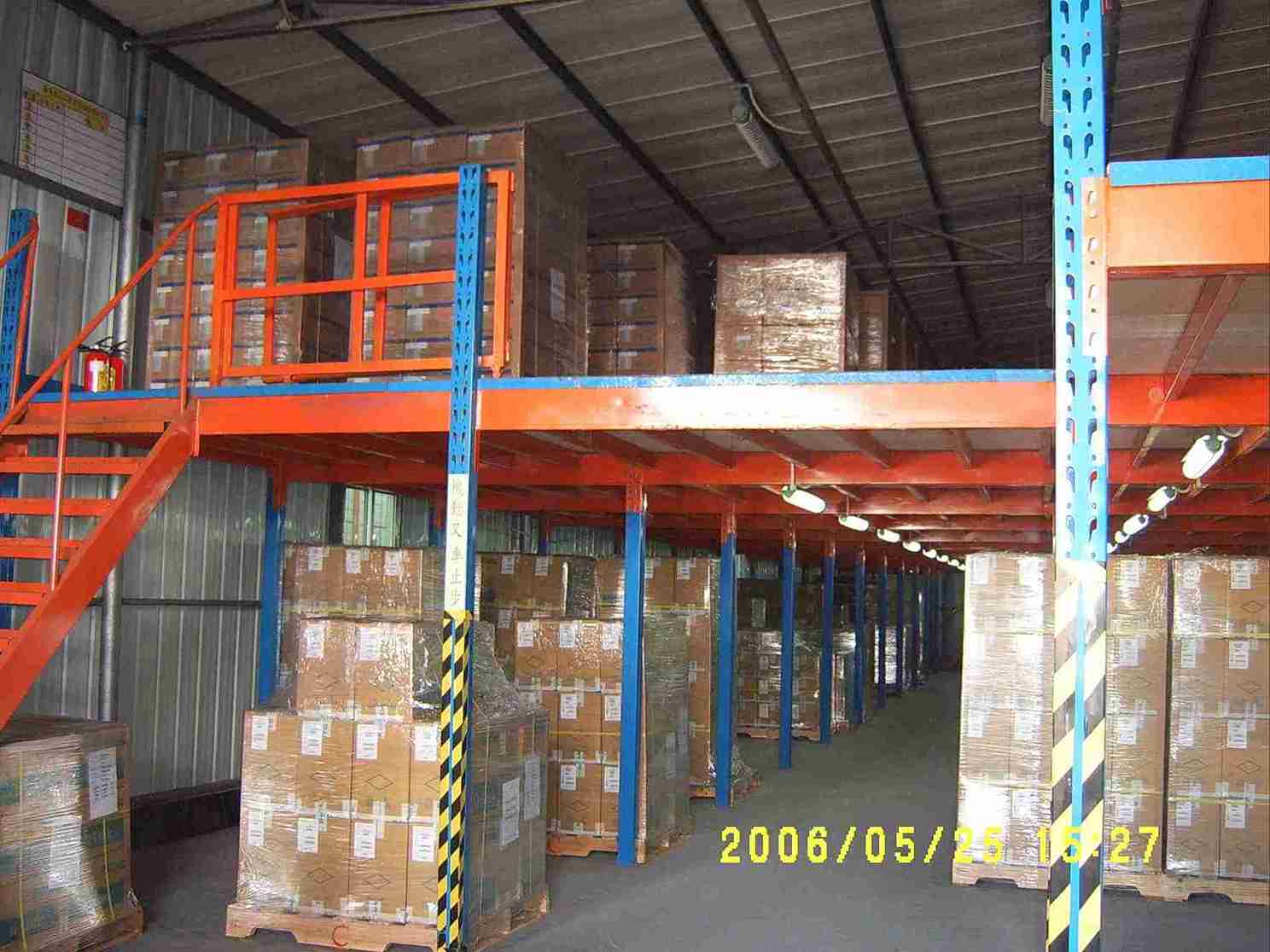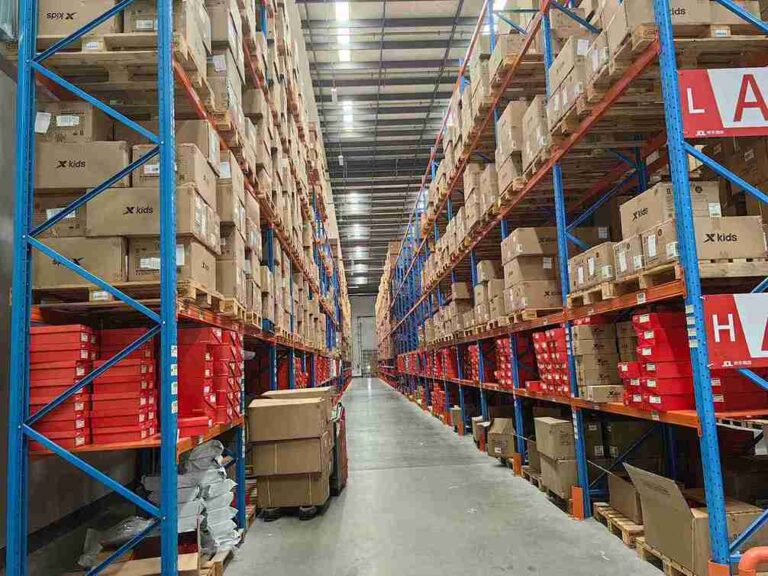📐 "First 50 Enterprise Queries Get Custom 3D Warehouse Design" Plan

Revolutionizing Warehouse Efficiency with Modular Industrial Racking Systems
In an era where supply chain agility determines business success, modular industrial racking systems have emerged as the gold standard for modern warehousing. These innovative storage solutions provide unmatched scalability, durability, and automation compatibility, making them indispensable for distribution centers, manufacturing plants, and e-commerce fulfillment hubs.
Unlike traditional static racking, modular industrial racking systems are engineered for adaptability. They allow businesses to:
-
Expand storage capacity on demand without costly infrastructure changes
-
Seamlessly integrate with automated systems like AS/RS and robotic pickers
-
Maximize vertical and horizontal space utilization for higher storage density
-
Reduce operational costs through efficient inventory management
This comprehensive guide explores every aspect of modular industrial racking systems, from design variations to real-world applications, helping businesses make data-driven decisions for their storage needs.

The Critical Role of Modular Industrial Racking Systems in Modern Logistics
1. Meeting the Demands of Contemporary Supply Chains
Today’s warehouses face unprecedented challenges:
-
Rapidly fluctuating inventory volumes due to seasonal demand
-
Shorter order fulfillment windows driven by e-commerce growth
-
Increasing labor costs necessitating automation
Modular industrial racking systems directly address these pain points by providing:
✔ Configurable layouts that adapt to inventory changes
✔ Standardized dimensions for smooth automation integration
✔ High-density storage options to reduce facility footprint
2. Cost-Benefit Analysis: Why Modular Outperforms Traditional Racking
A comparative study of warehouse storage solutions reveals:
| Feature | Traditional Racking | Modular Industrial Racking Systems |
|---|---|---|
| Flexibility | Fixed configuration | Fully adjustable components |
| Expansion Cost | Requires complete replacement | Gradual, piece-by-piece addition |
| Automation Compatibility | Limited | Designed for robotic systems |
| Lifespan | 10-15 years | 20+ years with proper maintenance |
The data clearly shows modular industrial racking systems deliver superior long-term value.
3. The Automation Advantage: How Modular Systems Enable Smart Warehousing
Leading logistics operations now pair modular industrial racking systems with:
-
Automated Storage/Retrieval Systems (AS/RS)
-
Autonomous Mobile Robots (AMRs)
-
AI-powered inventory management
These integrations create “lights-out” warehouses that operate with minimal human intervention while achieving:
→ 300% faster order processing
→ 99.9% inventory accuracy
→ 24/7 operational capability
Comprehensive Guide to Modular Industrial Racking System Types
1. Selective Pallet Racking: The Workhorse of Modular Storage
As the most widely implemented modular industrial racking system, selective pallet racking offers:
-
Instant access to every pallet
-
Beam height adjustability in 1-2″ increments
-
Load capacities up to 5,000 lbs per shelf
Best for: Warehouses with high SKU variety and frequent inventory rotation
2. Drive-In/Drive-Through Racking: High-Density Bulk Storage
These modular industrial racking systems feature:
-
Forklift-accessible lanes within the rack structure
-
Storage density increases of 60-75% over selective racking
-
LIFO or FIFO configurations
Ideal applications:
• Beverage distribution
• Cold storage facilities
• Large appliance warehouses
3. Push-Back Racking: Dynamic Last-In-First-Out Storage
A sophisticated modular industrial racking system that:
-
Utilizes gravity-fed carriage systems
-
Stores 3-5 pallets deep per lane
-
Automatically brings next pallet forward when one is removed
Operational benefits:
✓ 40% faster loading/unloading vs. traditional racking
✓ Reduced forklift traffic in aisles
✓ Perfect for perishable goods
4. Cantilever Racking: Specialized Storage for Oversized Items
Unlike standard modular industrial racking systems, cantilever designs:
-
Eliminate front columns for unobstructed loading
-
Feature adjustable arms (3′-20′ lengths)
-
Support irregularly shaped loads up to 10,000 lbs
Common uses:
→ Steel pipes and lumber
→ Furniture and carpet rolls
→ Industrial machinery parts
5. Mobile Racking: Maximum Storage in Minimal Space
The most space-efficient modular industrial racking system:
-
Racks move on motorized tracks
-
Creates temporary aisles only when needed
-
Increases storage capacity by 80-100%
Critical for:
• Urban warehouses with expensive real estate
• High-value inventory requiring security
• Document archives and cold storage
Technical Specifications: What Makes Modular Industrial Racking Systems Superior
1. Structural Engineering Excellence
Premium modular industrial racking systems feature:
-
High-grade steel construction (ASTM A500 Grade C)
-
Hot-dip galvanized finishes for corrosion resistance
-
Seismic-rated options for earthquake zones
2. Load Capacity Optimization
Engineers design these systems for:
-
Uniformly distributed loads up to 50,000 lbs per bay
-
Point loading capabilities for specialized applications
-
Dynamic load calculations accounting for forklift impacts
3. Safety Systems Integration
Modern modular industrial racking systems incorporate:
-
Column protectors and guard rails
-
Beam locks to prevent accidental dislodging
-
LED aisle lighting for visibility
Implementation Strategy: Deploying Modular Industrial Racking Systems
Phase 1: Needs Assessment
-
Conduct 3D laser scanning of existing facility
-
Analyze SKU velocity patterns
-
Project 5-year growth requirements
Phase 2: System Design
-
Create digital twin simulations
-
Optimize pick paths and storage zones
-
Plan future expansion points
Phase 3: Installation & Commissioning
-
Precision alignment using laser levels
-
Load testing with 125% of rated capacity
-
Operator training programs
Maintenance Protocols for Maximum System Longevity
Quarterly Inspection Checklist
-
Structural integrity checks for:
-
Bent or damaged components
-
Loose or missing bolts
-
Proper anchor tightness
-
-
Operational assessments:
-
Forklift collision damage
-
Beam deflection measurements
-
Load distribution verification
-
Annual Preventative Maintenance
-
Ultrasonic testing of critical welds
-
Corrosion protection reapplications
-
System re-leveling as needed
Future Innovations in Modular Industrial Racking Systems
1. AI-Optimized Dynamic Racking
Emerging systems will:
-
Automatically reconfigure layouts based on demand patterns
-
Predictively adjust storage positions using machine learning
2. Sustainable Material Advancements
Next-gen modular industrial racking systems will incorporate:
-
Recycled steel alloys with higher strength-to-weight ratios
-
Self-healing coatings that repair minor damage
3. IoT-Enabled Smart Racking
-
Real-time load monitoring via embedded sensors
-
Automated damage reporting to maintenance teams
Conclusion: Why Modular Industrial Racking Systems Are the Smart Choice
For operations seeking future-proof, automation-ready storage solutions, modular industrial racking systems deliver unparalleled advantages:
✔ Scalability to grow with business needs
✔ Integration with cutting-edge warehouse technologies
✔ Durability for decades of reliable service
✔ Efficiency to maximize every square foot
By implementing these systems, businesses position themselves for sustained competitive advantage in an increasingly automated logistics landscape.
Frequently Asked Questions
1. How quickly can modular industrial racking systems be reconfigured?
Most systems allow layout changes within 24-48 hours, with minimal operational disruption.
2. What fire protection options exist for these racking systems?
Options include spray-on fireproofing, integrated sprinkler systems, and flame-retardant coatings.
3. Can modular racking be relocated to new facilities?
Yes, one of the key benefits is complete disassembly and reassembly at new locations.
4. What’s the ROI timeframe for these systems?
Most operations see full ROI within 18-36 months through space savings and efficiency gains.
5. How do modular systems handle temperature extremes?
Specialized versions are available for -40°F cold storage to 120°F industrial environments.
Welcome to contact us, if you need warehouse rack CAD drawings. We can provide you with warehouse rack planning and design for free. Our email address is: jili@geelyracks.com




